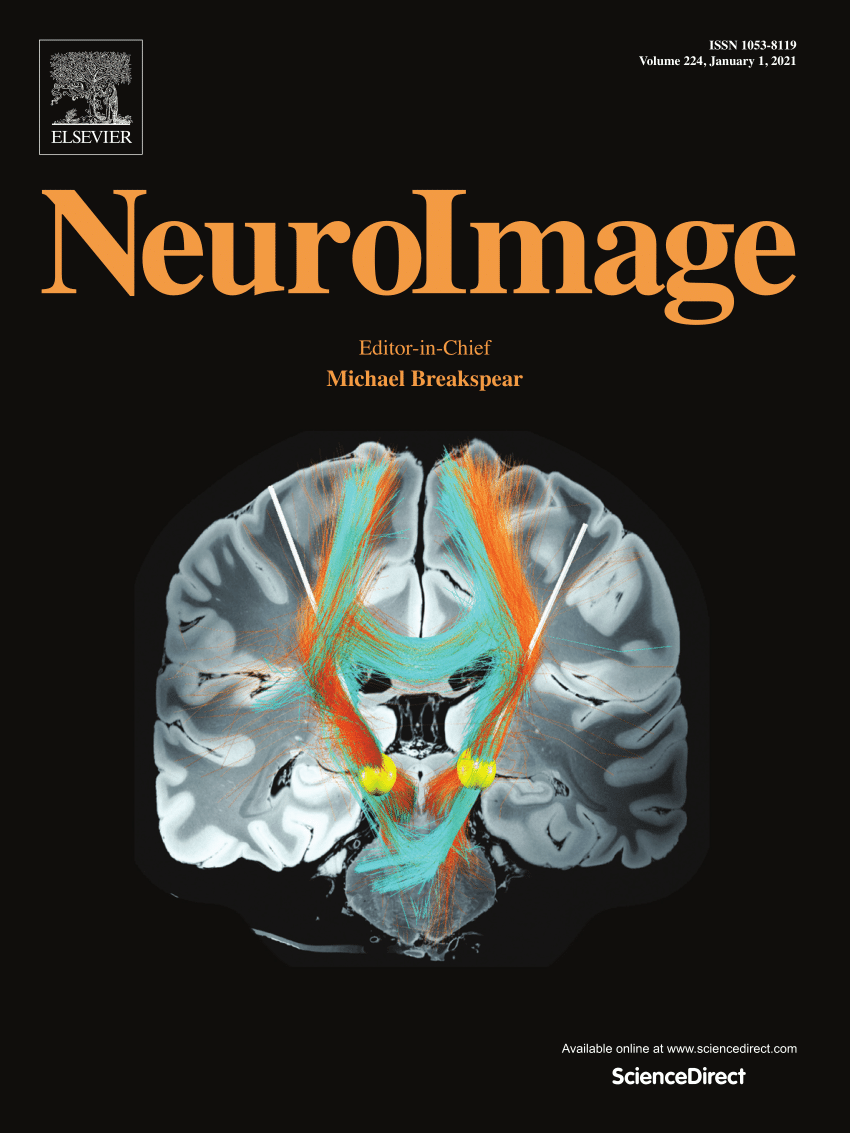Partial information transfer from peripheral visual streams to foveal visual streams may be mediated through local primary visual circuits
IF 4.7
2区 医学
Q1 NEUROIMAGING
引用次数: 0
Abstract
Visual object recognition is driven through the what pathway, a hierarchy of visual areas processing features of increasing complexity and abstractness. The primary visual cortex (V1), this pathway’s origin, exhibits retinotopic organization: neurons respond to stimuli in specific visual field regions. A neuron responding to a central stimulus will not respond to a peripheral one, and vice versa. However, despite this organization, task-relevant feedback about peripheral stimuli can be decoded in unstimulated foveal cortex, and disrupting this feedback impairs discrimination behavior. The information encoded by this feedback remains unclear, as prior studies used computer-generated objects ill-suited to dissociate different representation types. To address this knowledge gap, we investigated the nature of information encoded in periphery-to-fovea feedback using real-world stimuli. Participants performed a same/different discrimination task on peripherally displayed images of vehicles and faces. Using fMRI multivariate decoding, we found that both peripheral and foveal V1 could decode images separated by low-level perceptual models (vehicles) but not those separated by semantic models (faces). This suggests the feedback primarily carries low-level perceptual information. In contrast, higher visual areas resolved semantically distinct images. A functional connectivity analysis revealed foveal V1 connections to both peripheral V1 and later-stage visual areas. These findings indicate that while both early and late visual areas may contribute to information transfer from peripheral to foveal processing streams, higher-to-lower area transfer may involve information loss.
从外周视觉流到中央凹视觉流的部分信息传递可能通过局部初级视觉回路介导。
视觉对象识别是通过什么路径驱动的,这是一个视觉区域的层次结构,处理越来越复杂和抽象的特征。初级视觉皮层(V1)是该通路的起源,它表现出视网膜异位组织:神经元对特定视野区域的刺激作出反应。对中枢刺激作出反应的神经元不会对外围刺激作出反应,反之亦然。然而,尽管有这种组织,关于外围刺激的任务相关反馈可以在未受刺激的中央凹皮层中解码,破坏这种反馈会损害辨别行为。这种反馈编码的信息仍然不清楚,因为之前的研究使用计算机生成的对象不适合分离不同的表征类型。为了解决这一知识差距,我们利用现实世界的刺激研究了外围到中央凹反馈中编码信息的本质。参与者对周围显示的车辆和人脸图像执行相同/不同的识别任务。通过功能磁共振多变量解码,我们发现外周和中央凹V1都可以解码由低级感知模型(车辆)分离的图像,但不能解码由语义模型(面孔)分离的图像。这表明反馈主要携带低级知觉信息。相反,更高的视觉区域分辨出语义上不同的图像。功能连通性分析显示中央凹V1连接到周围V1和后期视觉区域。这些发现表明,虽然早期和晚期的视觉区域都可能有助于从外围到中央凹处理流的信息传递,但较高到较低区域的传递可能涉及信息丢失。
本文章由计算机程序翻译,如有差异,请以英文原文为准。
求助全文
约1分钟内获得全文
求助全文
来源期刊

NeuroImage
医学-核医学
CiteScore
11.30
自引率
10.50%
发文量
809
审稿时长
63 days
期刊介绍:
NeuroImage, a Journal of Brain Function provides a vehicle for communicating important advances in acquiring, analyzing, and modelling neuroimaging data and in applying these techniques to the study of structure-function and brain-behavior relationships. Though the emphasis is on the macroscopic level of human brain organization, meso-and microscopic neuroimaging across all species will be considered if informative for understanding the aforementioned relationships.
 求助内容:
求助内容: 应助结果提醒方式:
应助结果提醒方式:


